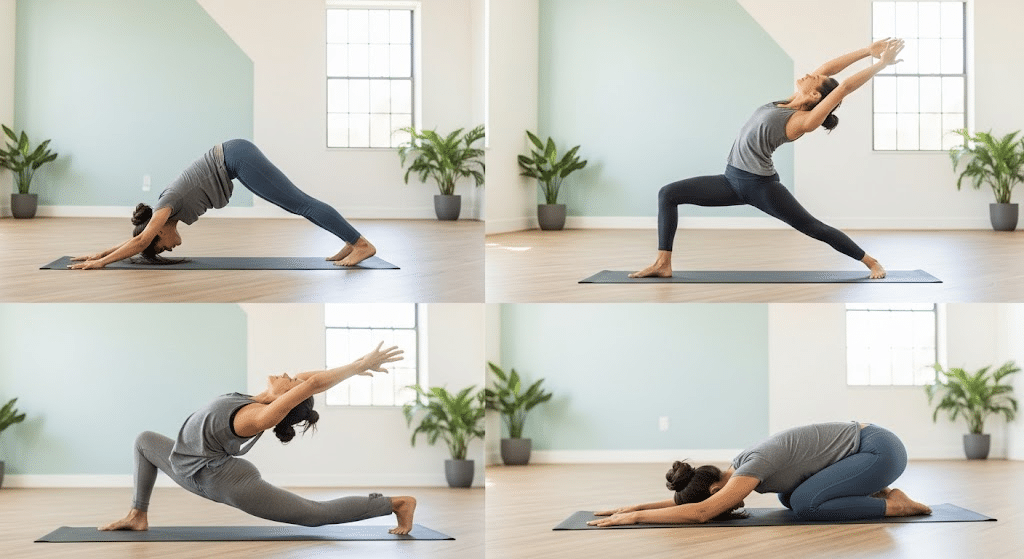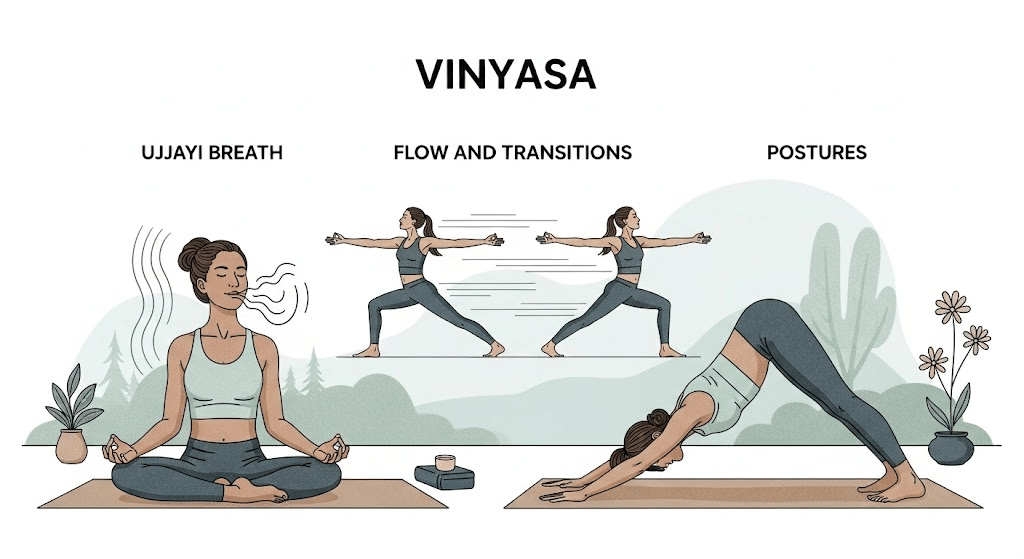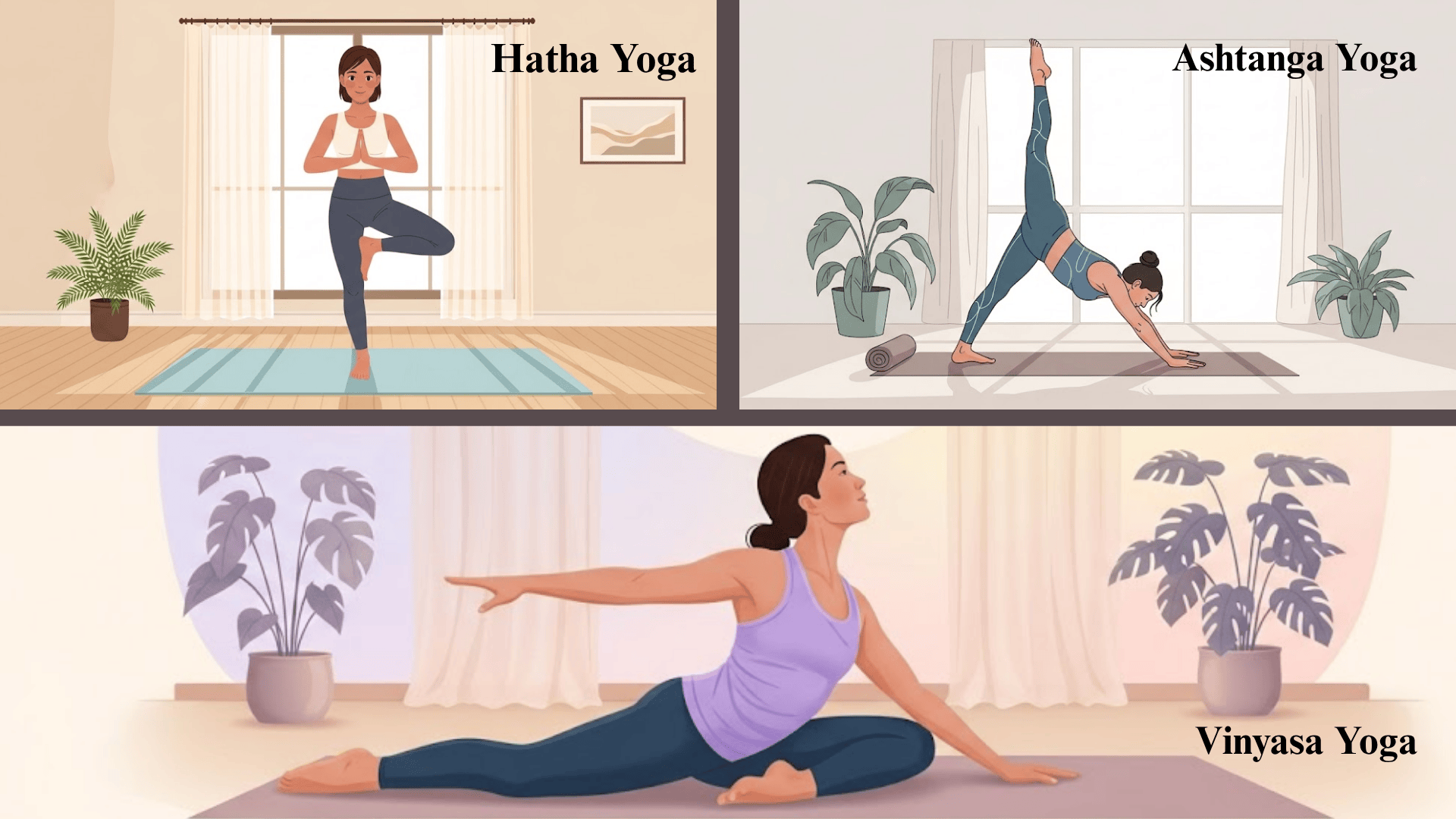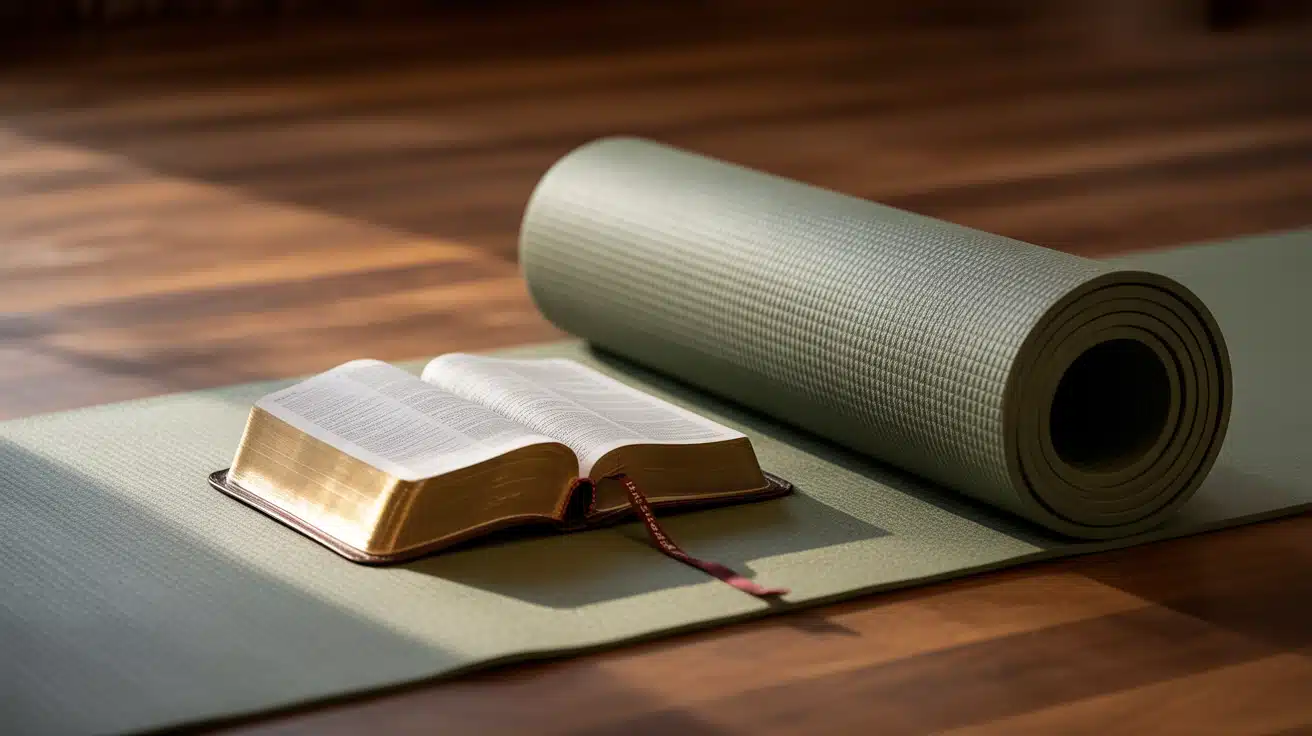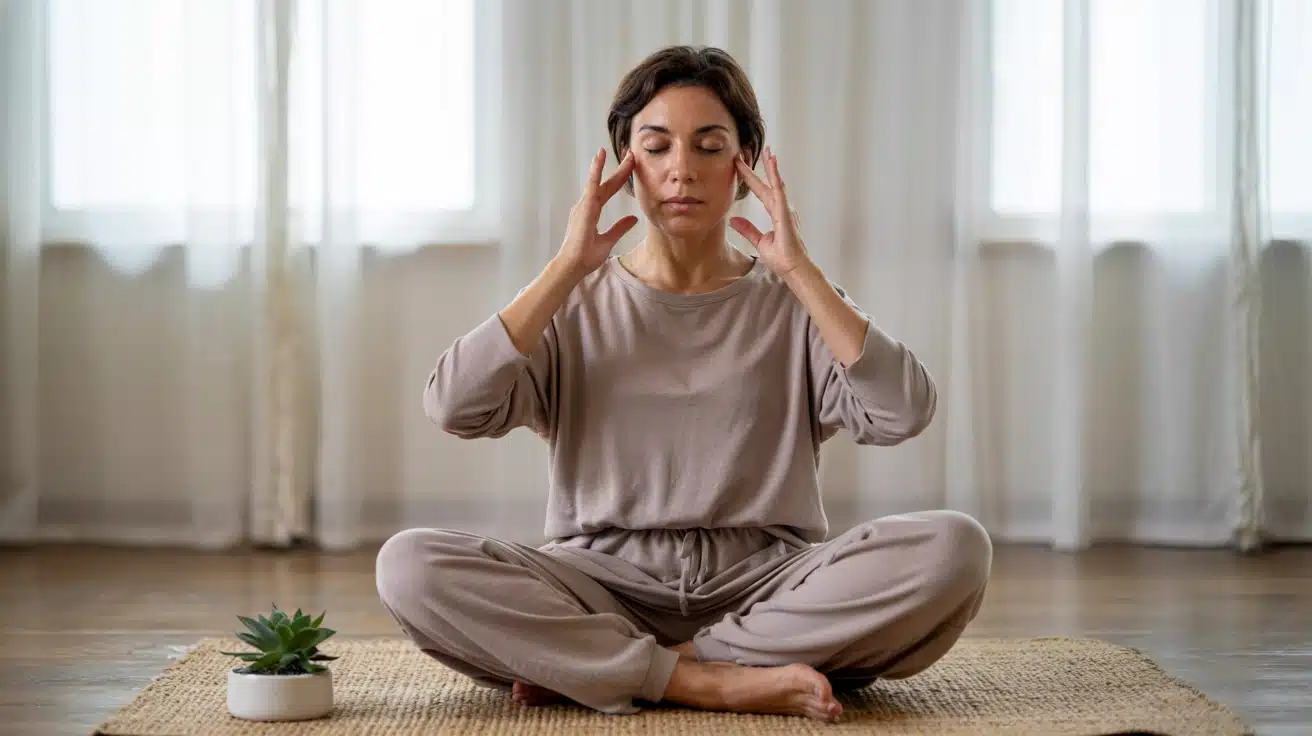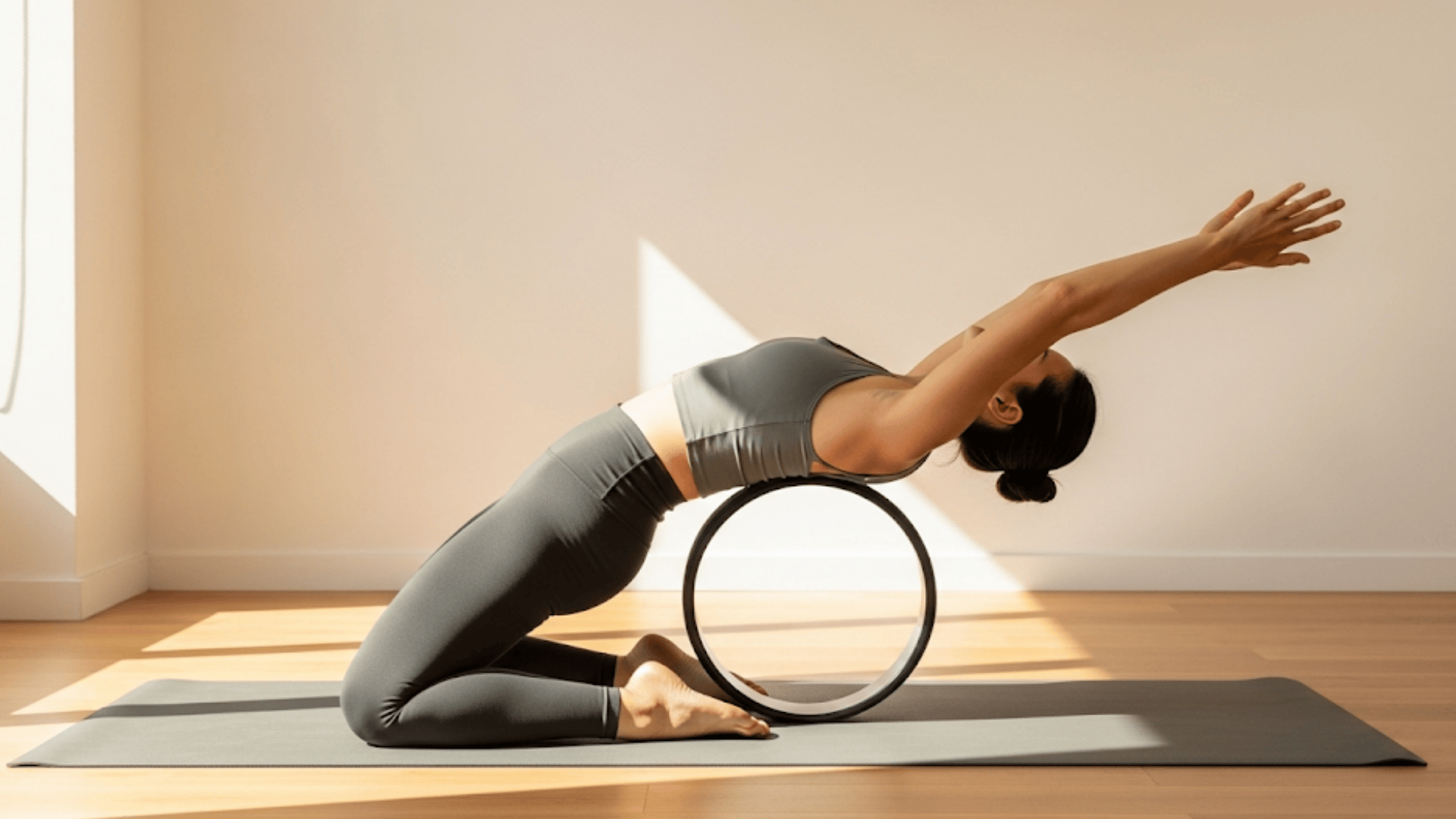Have you ever wondered why some yoga classes feel more like a meditation in motion than a static stretch session?
You’re likely thinking about vinyasa yoga, a practice that has captured millions of hearts worldwide with its flowing sequences and mindful movement.
Vinyasa yoga’s meaning goes far beyond simple poses. It’s a complete system that links breath with movement, creating a dance-like flow that builds both physical strength and mental clarity.
Unlike other yoga styles that hold poses for extended periods, vinyasa keeps you moving in rhythm with your breath.
This article will explain everything you need to know about vinyasa yoga, from its Sanskrit origins to its modern variations.
You’ll learn the core elements that make vinyasa unique and whether this flowing practice aligns with your goals.
What is Vinyasa Yoga?
Vinyasa yoga is a flowing style of yoga that connects breath with movement in one smooth sequence. This practice has gained massive popularity worldwide because it offers both physical challenge and mental calm in a single session.
Unlike other yoga styles, Vinyasa stands out for its fluid transitions between poses. While Hatha yoga holds poses for longer periods and Ashtanga follows a strict sequence, Vinyasa allows for creativity and variation in each class.
The Meaning of “Vinyasa”
The word “vinyasa” comes from ancient Sanskrit and breaks down into two parts: “vi” meaning “special,” and “nyasa” meaning “to place.” When combined, vinyasa translates to “to place in a special way.”
The core concept of vinyasa yoga centers on breath-synchronized movement. Every inhale and exhale guides your body’s transitions between poses. When you inhale, you might lift your arms overhead or open your chest. When you exhale, you might fold forward or twist your spine.
This rhythmic breathing pattern becomes the foundation that supports your entire practice and creates a meditative quality that distinguishes vinyasa from other forms of exercise.
Core Elements of Vinyasa Yoga
Ujjayi Breath: This forms the backbone of vinyasa practice and involves breathing through your nose while creating a soft sound in the back of your throat. The rhythmic inhalations and exhalations guide every transition between poses, helping you stay focused, maintain steady energy, and calm your nervous system.
Flow and Transitions: The smooth transitions between poses are just as important as the poses themselves. You flow from one position to the next with grace and control through sequences like Sun Salutations, standing flows between warrior poses, and seated transitions between forward folds and backbends.
Postures in Vinyasa: Classes typically include standing poses like Downward-Facing Dog and Warrior poses, along with seated poses and balancing postures. Common flowing sequences feature Sun Salutations and vinyasa transitions from Chaturanga to Upward Dog to Downward Dog. The specific poses vary depending on your teacher’s style and class level.
Popular Types of Vinyasa Yoga
Once you grasp these basics, you can learn about the diverse vinyasa yoga styles that have evolved over time.
1. Ashtanga Vinyasa
Ashtanga Vinyasa follows a set sequence of poses that never changes. This traditional style connects to the original Vinyasa Krama teachings and provides a structured approach to flow yoga.
Students practice the same sequence repeatedly, allowing them to track their progress over time, build strength and flexibility systematically, and develop a deeper understanding of each pose.
2. Power Vinyasa
Power Vinyasa focuses on building strength, stamina, and flexibility through high-intensity sequences. These classes move at a faster pace and often include challenging poses like arm balances and inversions.
This style appeals to practitioners who want a serious physical workout, increased muscle tone and endurance, and dynamic, athletic movement patterns.
3. Slow Flow Vinyasa
Slow Flow Vinyasa takes a gentler approach, holding poses for longer periods while maintaining the breath-movement connection. This style works well for beginners or anyone seeking a more mindful practice.
Benefits of slow flow include more time to understand proper alignment, reduced risk of injury, greater focus on breath awareness, and deeper relaxation effects.
4. Hot Vinyasa
Hot Vinyasa classes take place in heated rooms (typically 85-95°F) to enhance flexibility and promote detoxification through sweating. The heat helps muscles warm up faster and allows for deeper stretches.
Practitioners often choose hot vinyasa for increased flexibility gains, enhanced cardiovascular benefits, improved focus through heat challenge, and deeper muscle release.
Benefits of Vinyasa Yoga
- Increased flexibility and range of motion
- Enhanced core strength and muscle tone
- Better balance and coordination
- Improved posture and body awareness
- Reduced stress and anxiety levels
- Better sleep quality and mood regulation
- Enhanced concentration and mental clarity
- Improved circulation and heart health
- Increased lung capacity and breath control
- Greater present-moment awareness
Is Vinyasa Yoga for Beginners?
Yes, vinyasa yoga works great for beginners! Look for classes labeled “beginner,” “gentle flow,” or “slow flow” to start safely.
Use props like blocks and straps. Take breaks when needed. Focus on breathing over perfect poses. Start with shorter classes.
Your first class follows this structure: 5-10 minutes of breathing and warm-ups, 10-15 minutes of sun salutations and standing flows, 20-30 minutes of main practice with various poses, and 5-10 minutes of cool-down and relaxation.
Key tips:Breath comes first, slow down if you lose it. Listen to your body. Don’t compare yourself to others. Ask questions when confused.
Practice regularly. Even 15 minutes daily beats one long weekly session.
Vinyasa Yoga vs Other Styles
To better understand what makes vinyasa unique, let’s compare it with other popular yoga styles.
| Aspect | Vinyasa | Hatha | Ashtanga |
|---|---|---|---|
| Movement Style | Flowing movement with breath synchronization | Static poses held for longer periods | Fixed sequences are practiced repeatedly |
| Pace | Moves faster, builds heat | Emphasizes stillness | Consistent, moderately fast pace |
| Sequence Variety | Variable sequences that change each class | Individual poses with longer holds | Set sequences that never change |
| Focus | Builds heat through flowing movement | Develops strength and flexibility | Systematic progression through a set series |
| Teacher Creativity | Allows teacher creativity and adaptation | Focus on alignment and individual poses | Follows traditional sequence structure |
When to Avoid Vinyasa Yoga?
- You should avoid vinyasa yoga if you have recent injuries or surgeries that limit movement.
- Those with severe arthritis or joint problems may find Vinyasa too challenging.
- Pregnant women should seek prenatal modifications before practicing vinyasa yoga.
- High blood pressure patients should avoid inversions and consult their doctor first.
- Stop practicing immediately if you experience severe pain or discomfort during poses.
Always follow medical advice when professionals recommend avoiding dynamic movement.
The Bottom Line
The vinyasa yoga meaning extends beyond studios into daily life, where rhythmic breathing patterns and mindful movement principles continue to support well-being.
This flowing practice becomes a tool for managing stress and finding moments of calm in busy schedules.
From gentle, slow flows to intense power sessions, there’s a vinyasa style for everyone. The practice adapts to your needs while building strength, flexibility, and mental clarity.
The real magic happens when vinyasa principles extend beyond your mat. The breathing techniques and mindful movements become tools for managing daily stress and staying centered.

